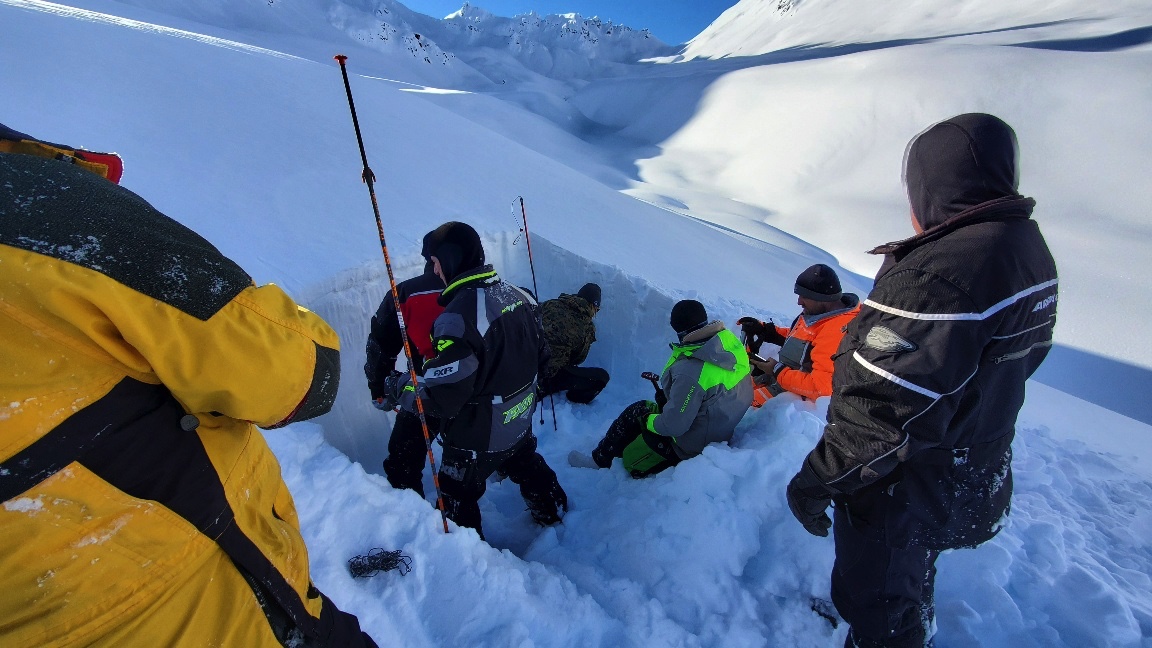Detailed Observation
| Date | 2020-02-26 |
| Location | Eastern Alaska Range |
| Observer | Inaugural Maclaren Lodge Avy 1 |
| Avalanche | N |
General Observations
During our first ride day of our snowmachine based avalanche 1 class at Maclaren Lodge we rode to the Cotton Drainage near the Maclaren Glacier. About 2 inches of fresh snow had fallen overnight at the lodge. We observed several natural avalanches on wind loaded terrain steeper than 35 degrees. These avalanches were D1 in size and consisted of the new snow from the previous night about 1' crown depth at the deepest. This kept us off similar wind loaded terrain of larger consequence. We observed one larger D2 natural avalanche further towards the head waters of Cotton Wood Creek, which we assumed was also a fresh wind slab.
We dug 2 snow pits, the first located on a Southwest aspect in wind loaded terrain similar to the D1 natural avalanches we saw. The elevation was approximately 3400', 30 degree slope, and at this elevation there was about 5'' from last night. We observed several layers, 2 of which being a main concern. The first layer was the top 5 inches which was the new snow from last night in which proved reactivity in the snowpit and during machine slope testing in which a very small D1 avalanche was triggered. The second layer of main concern was about 100cms down and was a .5cm thick ice crust in which had small facets that had formed underneath and produced 2 EXTX results. After the ECTX results we continued to pound on the shovel with a lot of force and got the block to fail will full propagation across the entire block.
Our second snowpit was at roughly 4100', a NE aspect, 28 degree slope angle, and had about 8 inches of new snow on top. The Ice layer at this elevation was about 100cms down. We did another Extended Colum Test and the results were again ECTX. We could not produce any results even after heavy pounding on the block. At this pit we did 2 Propagation Saw Tests, in which the results were PST 40/100 100cms down. This shows us that the ice layer 100cms down is reactive and has a low probability of triggering but a high consequence.
Uploaded Images
